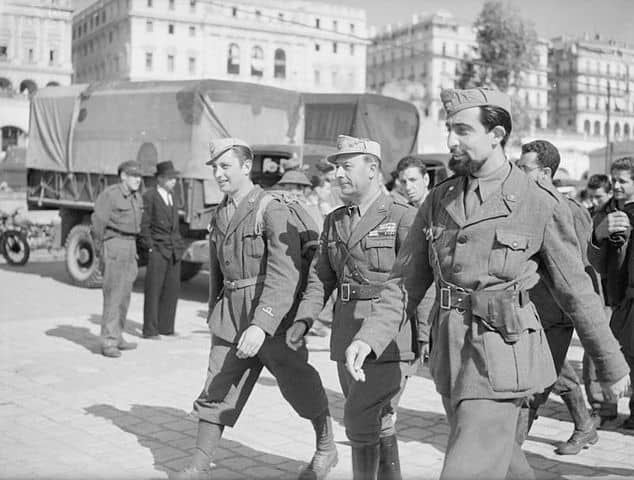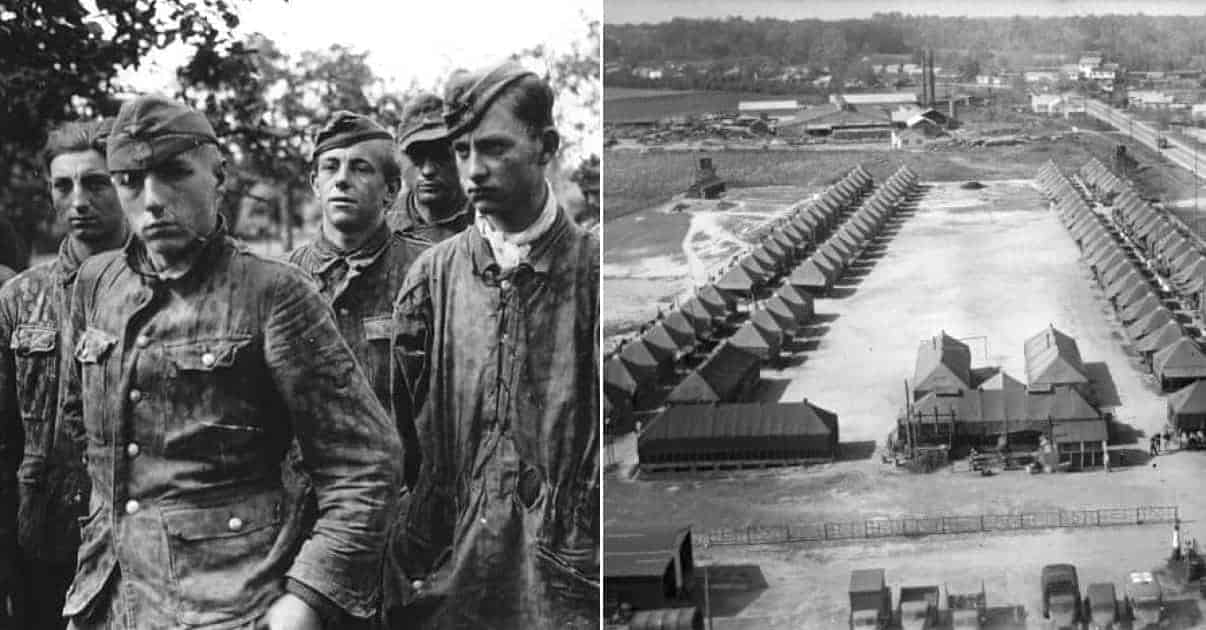When the United States entered World War II the British immediately requested American aid in housing the growing number of German prisoners of war they had taken in North Africa, and in downed German airmen during the Battle of Britain. Despite being unprepared the Americans agreed, knowing that the British lacked the resources to feed and house the German and Italian prisoners in their custody. Ships arriving in England carrying supplies and equipment were soon returning to the United States bearing prisoners of war. Eventually 45 of the contiguous states housed German, Italian, and Japanese prisoners of war.
The Axis prisoners, particularly the Germans, came to consider themselves fortunate to have surrendered to the Americans and British, rather than the feared Russians. American programs put them to work in a manner which indirectly supported the war effort by alleviating manpower shortages in agriculture and some industries. Eventually about 425,000 Axis prisoners were encamped in the United States, the overwhelming majority of them, 350,000, were Germans. Just over 50,000 were Italians and the remainder Japanese. Only about 1% of these prisoners attempted to escape during their captivity, a testament to the manner of their treatment and the efficiency of the American security.

Here are ten things you may not know about Axis prisoners of war in America during World War II.

Housing the prisoners.
The Geneva Convention of 1929 governed the treatment of prisoners of war during the Second World War. Under its provisions prisoners were to be provided the same housing and food that was available for their captors. This meant that as new prison camps were erected the guards and the prisoners were provided the same facilities, with the guards remaining housed in tents as long as the prisoners were. Enlisted men were allotted a minimum of 40 square feet of living space, with officers being provided three times that amount of room. Adequate recreational facilities were also provided under the terms of the convention.
After the United States landed in North Africa in November of 1942, larger numbers of German prisoners began to come into American custody. These prisoners were sent directly to the United States after being interrogated and processed by their captors, arriving in the eastern ports. Those with hard core Nazi leanings were separated from others less dedicated to Hitler. Officers were separated from enlisted and further interrogated regarding their party membership. Once the destination camp for the arriving prisoners was assigned they were sent there either by Army convoy or train, traveling in trucks or regular Pullman sleeper cars.
Camps were deliberately selected for their proximity to labor shortages, which the prisoners could be used to ease, their distance from urban areas where there were large German communities, and where materials to facilitate construction could be readily delivered. Many were located on or adjacent to existing military installations. Some were taken over from the Civilian Conservation Corps. The earliest prisoners taken by the Americans during Operation Torch, mostly members of the German Africa Corps and Italian troops, were held for most of the rest of the war at Fort Meade, Maryland. A few camps held multinational prisoners, others were all German or all Italian.
The first Axis prisoner taken by American troops was a Japanese sailor who survived the loss of his midget submarine. He was captured on Waimanolo Beach in Hawaii on December 8 1941. By April 1943, he was one of only 62 Japanese prisoners of war in American custody within the continental United States. More than 5,000 Germans and a bit more than half that number of Italians were in custody. The War Department quickly recognized the necessity of separating Germans who were members of the SS, the Gestapo, and more fanatical Nazis from the rank and file of German soldiery, and the first segregation camp was created in Oklahoma at Camp Alva.
Under the Geneva Convention officers were held separately from the enlisted men (which was also beneficial for security, as officers were more likely to espouse Nazi beliefs) and nationalities were separated in compounds in those camps which housed both Italians and Germans. Officers were allowed to work if they volunteered, but work assignments for enlisted men was compulsory. Workers were paid at roughly the same rate as their counterpart by rank in the United States Army, starting at about eighty cents per day. From this pay deductions were made to cover expenses such as clothing maintenance, as was the case with active duty troops.

